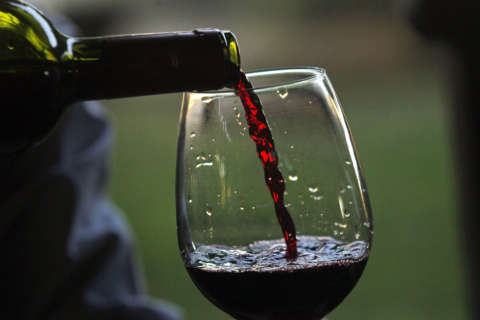WASHINGTON — Leftover wine? To quote a line from one of my favorite movies, “That’s inconceivable.”
I know there are a lot of leftovers the day after Thanksgiving: desserts, side dishes and, of course, turkey. But wine? I just can’t believe that there should be any leftover wine.
However, given my philosophy of enjoying multiple wines throughout the evening, I guess it’s possible to end up with a sip or two left in the bottle at the end of the night.
So what to do with leftover wine? The following advice has been collected from various friends and colleagues over the years.
First, it’s important to remember — or learn — that air is both wine’s best friend and worst enemy. Most wines improve with some exposure to air. A wine that has been decanted for, say, 15—30 minutes will probably taste a little softer and rounder than if sampled straight out of the bottle. But too much exposure to air can overoxidize the wine and turn it into an objectionable beverage.
Second, there is no “perfect” solution to removing the oxygen and keeping it out of the wine once it has been opened. So once it’s open, the name of the game is to limit the exposure to air or slow the oxidation reaction.
Some methods are better than others and may buy you a few days or even weeks, but ultimately, once the cork — or screw cap — is off the bottle, the wine’s days are numbered.
Option 1: Share
My favorite option is to simply consume the contents of the bottle after it’s opened. I find that inviting friends over usually does the trick. If I am out of friends, or friends are out of town, I will try to buy half-bottles of my favorite wines so there’s less to waste.
Option 2: Remove the air
However, if you do have leftovers, one of the most popular options is to use a device to extract air from the bottle. Most products consist of a pliable rubber stopper that is inserted into the top of the bottle. A handheld pump is then used to suck the air out of the bottle and produce a vacuum seal. A reasonably priced unit runs around $20 and can be found at most wine shops and home goods stores.
You can also buy small cylinders of pressurized inert gas, such as argon, from specialty stores and through online catalogs, that you can spray into the open bottle and recork the bottle. In theory, because the inert gas is heavier than the air in the bottle, it displaces the air away from the surface of the wine and forms a protective layer between the wine and oxygen. The cylinders I have seen are good for 10 to 15 uses, so the cost of protecting your leftovers can get pricey.
Or you can splurge on a self-contained pod that uses argon gas in a pressure- and temperature-controlled capsule. Simply place your open bottle in the Pek Supremo Wine Steward chamber, add the argon gas, set the thermostat, and your wine is good for up to two weeks. If you are prone to having a lot of leftover wine, the $200 price tag might be worth it.
If you know that you are going to serve a special bottle of wine and don’t want to take any chances with leftover spoilage, then the Coravin 1000 may be for you. The system’s unique design uses a long needle to penetrate the cork and inserts argon gas to push the wine into your glass. This allows you to access, pour and enjoy your favorite wines by the glass without pulling the cork, keeping the wine safe from oxidation, and allowing it to continue to age naturally. You can access the wine repeatedly, giving you the freedom to pour a glass from a favorite bottle at any time. However, flexibility has a price — and a stiff one at that. The system — along with two argon gas cartridges — will set you back about $300. It’s available through high-end wine shops, Amazon.com and the Coravin website.
My personal favorite technique is a relatively inexpensive, low-tech option that works very well. After you open your chosen bottle, immediately decant it into a clean, empty half bottle. Fill the smaller bottle up to where the shoulder of the bottle meets the neck. Use your thumb to push the cork from the original bottle into the half bottle — the imprint on the cork will remind you of what is in the bottle. This will leave very little air in the bottle.
Option 3: Chill
You can also put the filled half bottle in the refrigerator to slow the oxidation reaction. When you want to drink it, set it out for about 30 minutes beforehand. This method should buy you about a week of extended wine life.
A slightly more extreme alternative (which I learned from former CBS White House correspondent Bill Plante) is to place the half bottle in the freezer. Yes, I said the freezer — leaving room at the top for expansion. And if that didn’t seem improbable enough, defrost the wine by placing the bottle in the microwave for two 30-second intervals, then let it stand on the counter for about 10 minutes. I’ve tried this technique with some trepidation — and a less-expensive bottle of wine — and it actually works!
But in the end, the best method is to have no leftover wine at all.







